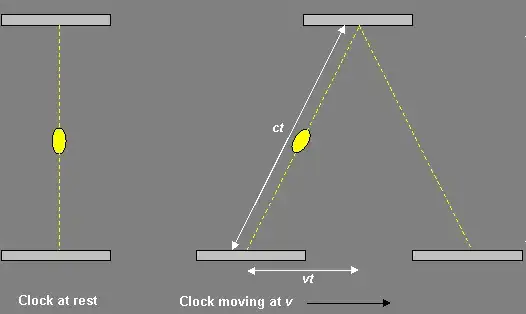A related question has been asked multiple times (like here, here and here). But none of those answers are clearing my doubt. In fact they're furthering my confusion. My specific doubt is regarding the contrasting explanations in the two common cases described below.
Consider Alice and Bob. Alice is moving horizontally rightward at a uniform velocity of v with respect to Bob.
Case 1:
Alice shoots a light pulse ahead of her (rightward).
- Alice observes velocity of light to be c moving rightward.
- Bob also observes velocity of light to be c moving rightward (and not c + v, because speed of source doesn't get added).
Case 2:
Alice is still moving rightward with a velocity v holding a light clock with her this time. A light pulse is shot vertically upward (according to her frame of reference) from the bottom mirror as shown in the image below.
- Alice observes the light pulse travel vertically upward at speed c.
- Bob observes the light pulse travel in north-east direction.
My question is regarding this Bob's observation highlighted in Bold. Why is the direction of light pulse changing according to Bob? It seems like vector addition of v and c but only considering a unit vector corresponding to v. This observation also clearly indicates that the motion of source does affect velocity of light (albeit the speed remains constant).
Kindly note that my question is not about light clock and its impossibility. As far as my question is concerned the second case is just about Alice shooting a light pulse vertically upward.
